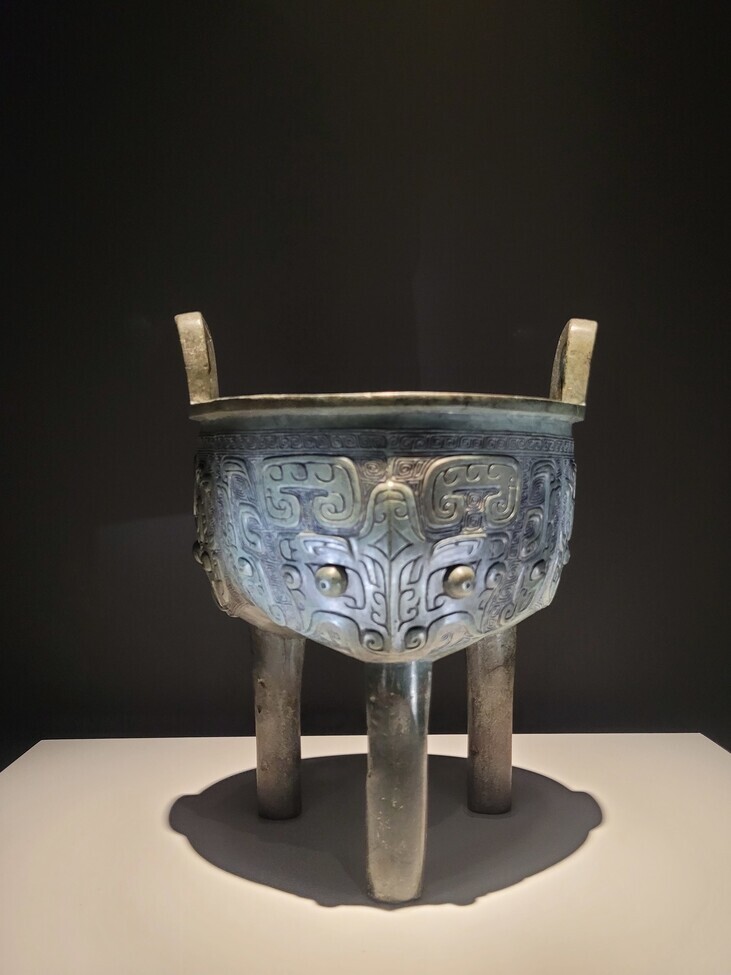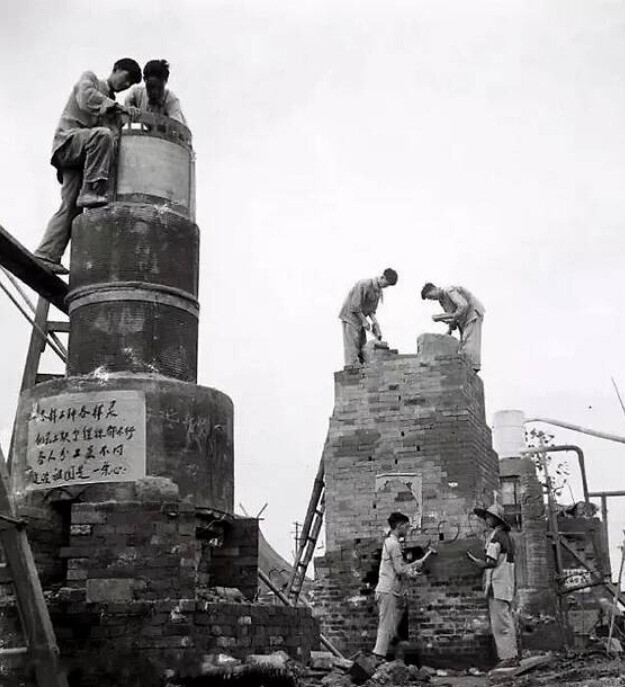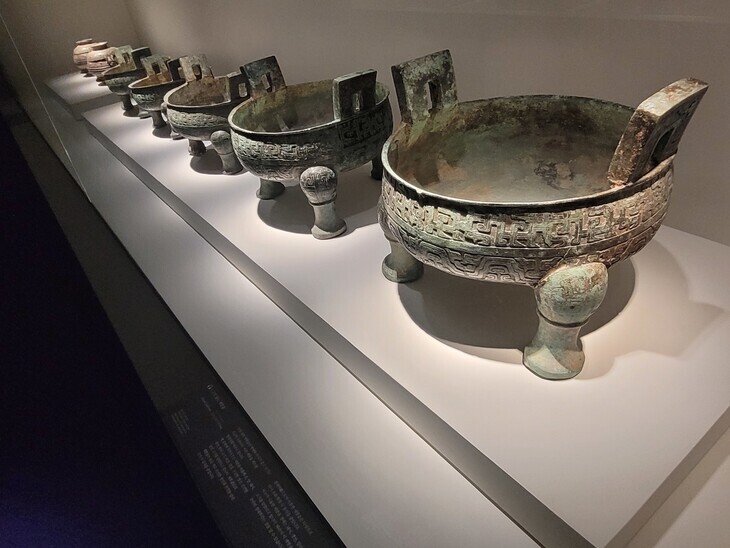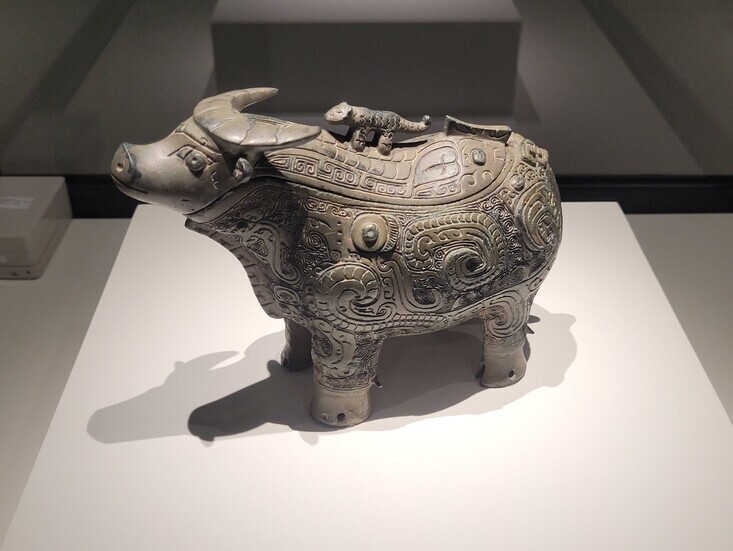hankyoreh
Links to other country sites 다른 나라 사이트 링크
Ancient bronzeware unearthed during era of backyard furnaces speaks to China’s vast, turbulent history

When Chinese leader Mao Zedong announced the Great Leap Forward in 1958, nine years after the Communist Party took power in China, he issued orders for the people to gather up their iron to make steel. His aim was to independently ramp up steel production in order to overtake the UK and the US within the next 20 years.
The movement centered around the building of Chinese-developed “backyard furnaces” to produce steel. The farmers who should have been focused on the busy season of crop cultivation were turned instead into smelters. They gathered up their metal — not only scrap metal, but also the cooking equipment and utensils they needed for eating, and even farming machinery.
But the farmers were unskilled, and the metal they produced was useless. Crop yields plummeted, and over 30 million people starved to death over a two-year period that is considered one of the greatest tragedies in history.

The same movement of metal gathering and refining that caused this tragedy had an expected benefit from a cultural heritage standpoint.
China may have failed to become a steel-producing power, but its people managed to gather up ancient bronze relics dating back to the Xia, Shang and Zhou Dynasties, which had either been passed down over the years or discovered on the land.
Those relics became the focus of subsequent research. It was a pivotal moment in bronzeware emerging alongside oracle bones as another representative example of China’s ancient cultural heritage.
“Ancient Chinese Bronze Culture,” a special exhibition currently running at the National Museum of Korea’s Special Exhibition Gallery, is South Korea’s first look at items from the Shanghai Museum, which acquired China’s greatest collection of ancient bronzeware as a result of the country’s turbulent modern history.
Shanghai was a key base in the metal gathering campaign during the Great Leap Forward. As the Chinese city with the most large-scale refineries, it was the destination for the various metal items gathered throughout the country.
And because those metal items included a large number of ancient Chinese bronze pieces, the port city ended up becoming a treasure trove of important bronzeware from all across China.

Ironically, the very same bronze items discovered through one of the defining tragedies of Chinese modern history are replete with designs that convey an odd sense of majesty, including motifs of real and mythical animals and geometric patterns.
The ancient Chinese people’s fear of nature — which enriched the earth and made agriculture possible, but also carried the threat of flooding, earthquakes and other disasters — was manifested in the form of an urgent aesthetic commitment to embodying the gods of heaven and earth.
Divided into four sections, the exhibition bases its story of transformation in bronzeware and other daily items on the views of the people of ancient China, who recognized the importance of the authority and ritual items that mediated nature and humanity.

One especially notable example is a tripod cauldron used to cook meat. Dating back to the Western Zhou era between the 11th and late 10th centuries BCE, its body is emblazoned with multiple faces of the taotie, a grotesque mythical creature.
One of the most important of the bronze items — first emerging in Xia Dynasty rituals and remaining in use for dynasties to come — it provides the exhibition with its face.
Another item on display is the lieding cauldron, a ritual vessel used in the 8th to 7th centuries BCE during the Spring and Autumn period, with the number of cauldrons and the types of food contained in them differing according to status and class. A late Shang water buffalo-shaped wine cask boasts a tiny tiger on its back.
Looking at beautiful items such as these, the viewer truly senses the transformation of bronzeware from divine ritual paraphernalia to something of use to ordinary people.
The exhibition will run through Sunday, Nov. 14.
By Roh Hyung-suk, staff reporter
Please direct questions or comments to [english@hani.co.kr]

Editorial・opinion
![[Editorial] Penalties for airing allegations against Korea’s first lady endanger free press [Editorial] Penalties for airing allegations against Korea’s first lady endanger free press](https://flexible.img.hani.co.kr/flexible/normal/500/300/imgdb/original/2024/0502/1817146398095106.jpg) [Editorial] Penalties for airing allegations against Korea’s first lady endanger free press
[Editorial] Penalties for airing allegations against Korea’s first lady endanger free press![[Editorial] Yoon must halt procurement of SM-3 interceptor missiles [Editorial] Yoon must halt procurement of SM-3 interceptor missiles](https://flexible.img.hani.co.kr/flexible/normal/500/300/imgdb/child/2024/0501/17145495551605_1717145495195344.jpg) [Editorial] Yoon must halt procurement of SM-3 interceptor missiles
[Editorial] Yoon must halt procurement of SM-3 interceptor missiles- [Guest essay] Maybe Korea’s rapid population decline is an opportunity, not a crisis
- [Column] Can Yoon steer diplomacy with Russia, China back on track?
- [Column] Season 2 of special prosecutor probe may be coming to Korea soon
- [Column] Park Geun-hye déjà vu in Yoon Suk-yeol
- [Editorial] New weight of N. Korea’s nuclear threats makes dialogue all the more urgent
- [Guest essay] The real reason Korea’s new right wants to dub Rhee a founding father
- [Column] ‘Choson’: Is it time we start referring to N. Korea in its own terms?
- [Editorial] Japan’s rewriting of history with Korea has gone too far
Most viewed articles
- 160% of young Koreans see no need to have kids after marriage
- 2[Editorial] Penalties for airing allegations against Korea’s first lady endanger free press
- 3Presidential office warns of veto in response to opposition passing special counsel probe act
- 4Months and months of overdue wages are pushing migrant workers in Korea into debt
- 5Alleged drug use by Korean A-listers rocks nation – but not for the first time
- 6Anti-immigration candidate marauds across Korea with squad detaining foreigners
- 7Hybe-Ador dispute shines light on pervasive issues behind K-pop’s tidy facade
- 8[Reporter’s notebook] In Min’s world, she’s the artist — and NewJeans is her art
- 9[Column] Unsettling moves by the UN Command lay way for Korean involvement in Taiwan
- 10Bills for Itaewon crush inquiry, special counsel probe into Marine’s death pass National Assembly